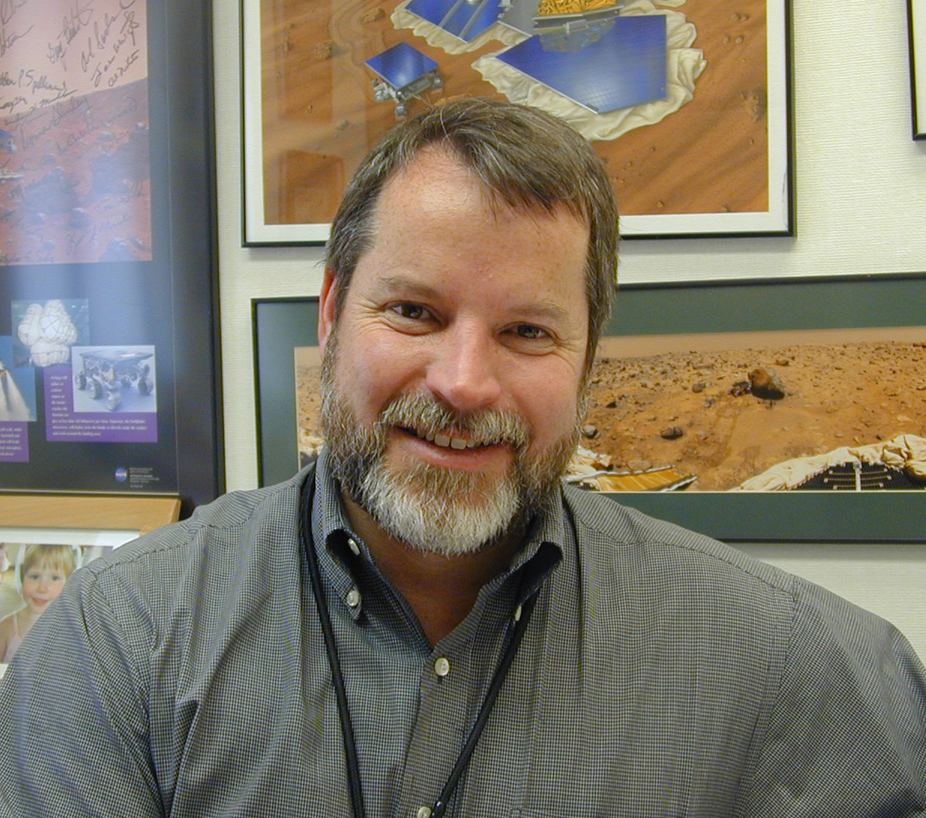By Chris Scolese
As a boy growing up, I was enthralled by all aspects of space exploration. I soon realized that the success of all space initiatives was the result of solid engineering. Today, while I serve as the NASA Chief Engineer, I am still in awe of our challenges and accomplishments. NASA is a great organization. Our work is literally the stuff of dreams. Themes of wonder, challenge, technology, and exploration are components of the work that we do. We sustain NASA’s ability to inspire through our commitment to solid engineering.
When Mike Griffin asked me to serve as the Agency’s Chief Engineer, it was clear that there was an overarching mission to create an organization that fostered excellence in engineering so our intellectual and mission products would be respected by our peers and the public. During the past two years, tremendous energy has been devoted to designing a governance model that will further promote mission excellence. Standards have been established that demand commitment to what we all know is the right way to succeed on complex engineering systems. These standards have been reinforced by increasing the power and responsibility of engineering and programmatic leaders working on our projects within the Agency. These increased authorities are further enhanced by an organizational commitment to new and improved training and development targeted for the individuals and teams working our missions. Taken together, these developments—the governance model, updated standards, clear lines of authority, open communication, and enhanced training—represent real steps forward in fostering engineering excellence.
This organizational transformation serves one purpose: to build our capacity for excellence. But engineering excellence goes beyond standards, communication, training, and structure. It comes down to personal responsibility for doing a job based on dedication and knowledge and speaking up about what is right and what is wrong. Such organizational and personal responsibility has always been a part of NASA, as it always is a part of great organizations.
I have been fortunate to work with great organizations and great people throughout my professional life. My career began in the navy nuclear submarine program, where I had the opportunity to work for Admiral Hyman Rickover, the father of the nuclear navy. Rickover understood better than anyone that people are the key to the success of any organization. “Human experience shows that people, not organizations or management systems, get things done,” he once said. These words continually serve as a reminder to me that everything we do in the Office of the Chief Engineer is ultimately about people. I am dedicated to providing the best possible leadership and guidance for the technical workforce—both civil servants and contractors—that designs, builds, and operates our space flight systems. Everyone working with NASA knows that our missions rarely get second chances, and we have little margin for error. So what does it take to achieve this consistent level of mission success? It requires nothing less than excellence. The legendary Green Bay Packers coach Vince Lombardi once said, “The quality of a person’s life is in direct proportion to their commitment to excellence, regardless of their chosen field of endeavor.” On some level we all know this and are motivated by the pursuit of excellence. With that in mind, how do we achieve engineering excellence? I see it in terms of four guiding principles: clearly documented policies and procedures, effective training and development, engineering rigor, and open communication. All are necessary to enable people to perform at their best in the unique context of NASA, a high-reliability organization that builds one-of-a-kind systems.
Given the complexity of the systems we will develop and deploy to fulfill the NASA mission, clear policies and procedures are essential. NPR 7120.5D (NASA Program and Project Management Processes and Requirements) represents our best thinking—drawing on NASA’s nearly fifty years of experience in running space flight programs—about the essentials of program and project management and the engineering of complex systems. The existence of sound policies and procedures does not guarantee success, but their absence is a surefire recipe for disaster. As President Eisenhower, the crowning achievement of whose military career was commanding the Allied invasion of Normandy, once observed, “Plans are nothing; planning is everything.”
Our policies, processes, and procedures must help us work collaboratively. That means allowing us to complete tasks effectively in a repeatable manner. This reduces costs and fosters designs that encourage collaborative problem solving, which is essential in an agency with ten field centers and thousands of private industry suppliers.
We all know that space flight projects are inherently risky ventures. So at its core, NPR 7120.5D will help us minimize risks that can jeopardize mission success. When we practice smart strategies at key knowledge decision points in the project life cycle, we minimize project risk. When we maintain a clear division between technical and program authority, we minimize both technical risk and performance risk. When we assign clear roles and responsibilities and strengthen accountability, we minimize the risk that an organizational weakness will lead to failure.
Engineering excellence is about more than risk reduction, though—again, it is about people. NASA is fortunate that the challenge and excitement of its mission allows it to attract and retain the most capable technical workforce in the world. After all, as President Kennedy said, “We do these things not because they are easy but because they are hard.” NASA, in turn, bears responsibility for providing this workforce with the training and development necessary to carry out its missions. The Academy of Program/Project and Engineering Leadership (APPEL), which operates within the Office of the Chief Engineer, is responsible for the development of program, project, and engineering leaders and teams within NASA. Its programs must draw on industry, academic, other space agency, and NASA best practices; cutting-edge research; and the most sophisticated tools available to give our people the best possible preparation for their work. Professional development is more than a series of benchmarks that must be met in order to progress up a career ladder; it is a philosophy of growth through continuous learning that becomes a habit of mind for individuals who recognize its value and make it a personal priority. Engineering rigor is a professional standard for scrutiny that individuals bring to their work. This has both a personal and an institutional component to it. On a personal level, all of us have an obligation to understand and believe that we are individually responsible for mission success. Each of us contributes, regardless of our position. What we do is so complex and unique that each and every component must work for us to be successful. On the institutional level, engineering rigor takes the form of independent technical authority, the implementation of which is spelled out in 7120.5D. We have learned the hard way what can happen when an engineering organization does not have a strong, independent voice. That independence cannot be sacrificed to schedules and budgets, just as programmatic concerns cannot be overlooked in the development of the technical approach for a given program or project.
Communication lies at the heart of all leadership and management challenges. Every major failure in NASA’s history has stemmed in part from poor communication. Among the technical workforce, communication takes myriad forms: team meetings, discussion among peers, continuous risk management, knowledge management, knowledge sharing, dissemination of best practices and lessons learned, and continuous learning, to name but a few. The complexity of NASA’s programs and projects demands an open, vigorous culture of continuous communication that flourishes within the context of policies and procedures while empowering individuals at all levels to raise concerns without fear of adverse consequences. NPR 7120.5D specifically addresses the importance of dissenting opinions, ensuring there is an orderly process for airing all viewpoints in an environment of respect, integrity, and trust.
Engineering excellence is a goal, not an objective that can be measured over a fixed period of time. Policies and processes, professional development, engineering rigor, and open communication are necessary means for achieving that goal, but they should not be mistaken for ends that offer any guarantees. Through the diligent practice of these principles, however, we will develop a way of working that will bring us closer to this goal and shape us into an engineering organization that can successfully execute the programs and projects that will take us closer to our vision of exploring the new frontier of space.









